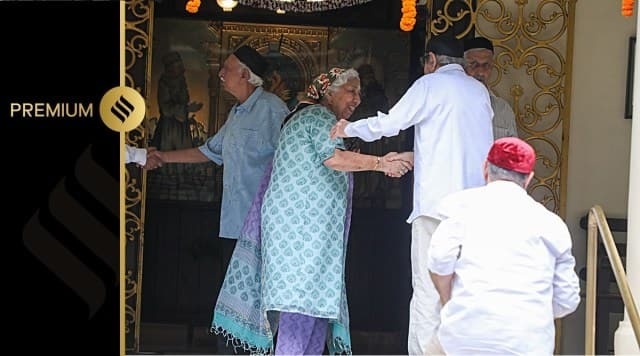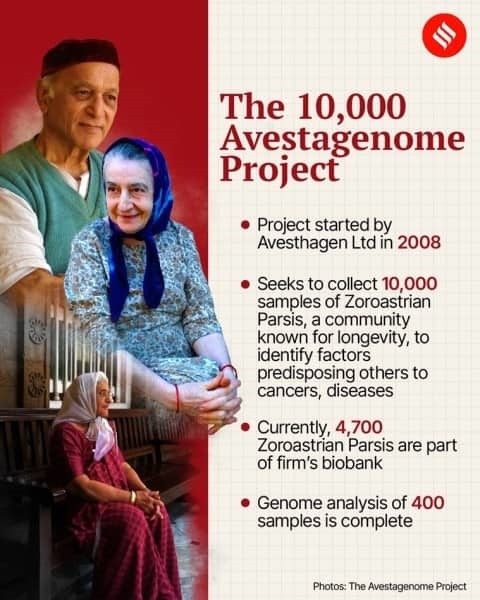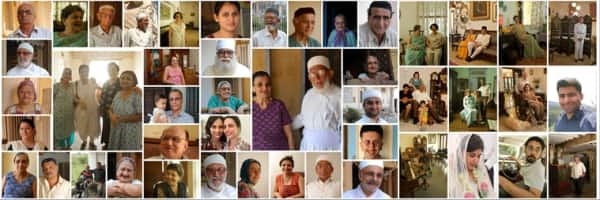A life sciences firm has turned to this community to understand how certain diseases occur in the general population
Written by Anuradha Mascarenhas | Indian Express
The project, started by a Bangalore-based life sciences firm, seeks to identify genetic risk factors within the Zoroastrian Parsi population that predispose individuals to cancers and diseases with high morbidity. (File/ Express photograph by Arul Horizon)
Unlocking the secrets of the Parsi gene: What makes them live longer, protects them from certain cancers
Why do Parsis in India live longer than other communities? Why do they have relatively fewer cases of lung, head or neck cancer, but present an increased prevalence of Parkinson, Alzheimer and other neurodegenerative diseases?
Questions such as these saw Perviz Bhote, a retired English literature professor, sign up for the ‘10,000 Avestagenome Project’ in 2008 to discover more about her genetic history. The 72-year-old recalls giving “blood samples and details of her family’s medical history” to the project’s researchers nearly 15 years ago.
The project, started by a Bangalore-based life sciences firm, seeks to identify genetic risk factors within the Zoroastrian Parsi population that predispose individuals to cancers and diseases with high morbidity. While the genetic make-up of most humans is 99 per cent same, having an endogamous community (people who marry within their own community) like Zoroastrian Parsis as a reference population gives researchers the unique ability to understand how diseases occur in the general population.
The project, which aims to collect samples from 10,000 Zoroastrian Parsis across the world by 2025, has so far uncovered 217 unique variants linked to longevity and 41 associated conditions like cancers, and neurodegenerative and rare diseases.
Fifteen years on, samples of 4,700 Zoroastrian Parsis are now a part of the project’s biobank (data and samples collected for research). And nearly two decades since the project started, Avesthagen Limited, the company founded by Dr Villoo Morawala-Patell, has completed the genome analysis of 400 samples in the hope of explaining why the median life expectancy of Parsis is higher than other communities in India. According to various epidemiological studies, the average Parsi in India lives till the age of around 85 years, nearly 10 years more than members of other communities in the country.
Besides their higher life expectancy, the project researchers said the Zoroastrian Parsis are the ideal control group for research into tobacco-related cancers since the community, which follows Zoroastrianism, has historically abstained from smoking. Though elements of creation — fire, water, air, earth and ether/space — are important in Zoroastrianism, there is special emphasis on fire. Researchers said this veneration for fire has kept most Parsis from smoking for centuries.
“Because of this social practice, the Zoroastrian Parsi genes can help us characterise biomarkers (genes showing the presence of specific biological conditions) that predict diseases caused by tobacco use, like lung, head and neck cancer. We are validating our results to develop a test for chain-smokers to understand their risk of developing lung cancer,” Kashyap Krishnasamy, the project leader, told The Indian Express.
He added that the project’s foray into the cutting-edge field of liquid biopsy-based diagnostic developments has uncovered a cache of genetic codes for molecular mechanisms for regulating cellular proliferation and death. The researchers have found an interesting interplay of these mechanisms, which contribute to the prognosis of lung cancer.
According to the 2011 Census, there were nearly 60,000 Zoroastrians, both Parsis and Iranis, in India. (Photo courtesy: The Avestagenome Project)
Parsis, who moved to India from Iran over 1,000 years ago, have remained highly endogamous. This, according to the project researchers, has ensured that disease-causing mutations that normally get diluted in other populations get amplified in the Zoroastrian Parsis. According to the 2011 Census, there were nearly 60,000 Zoroastrians, both Parsis and Iranis, in India. The community is also spread across Pakistan, Iran, North America, Canada, Britain and the Middle East.
To a question on the implications of the biobank, Krishnasamy said, “We plan to benchmark crucial disease-associated variants and classify their prevalence to tailor therapies that can correct genetic mutations. Hence, all this will improve patient outcomes in the case of complex genetic diseases like cancers and neurodegenerative diseases globally. The project will provide insights into disease prediction and also accelerate identification and development of biomarkers, predictive diagnostic tests, new drugs, and therapies.”



